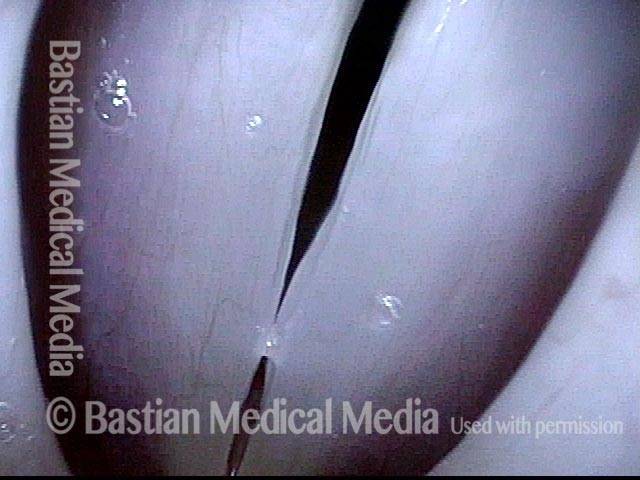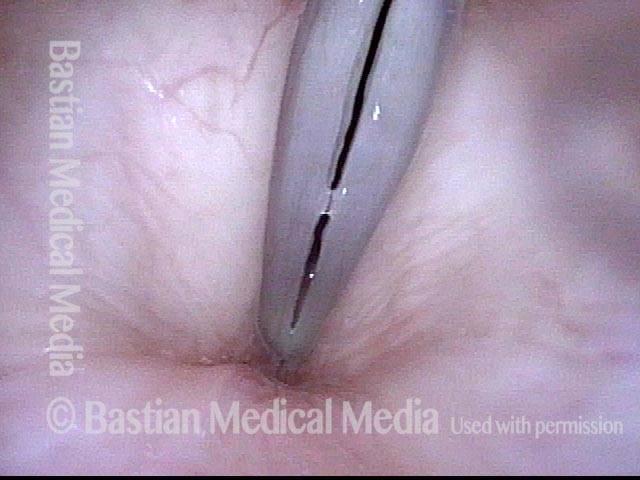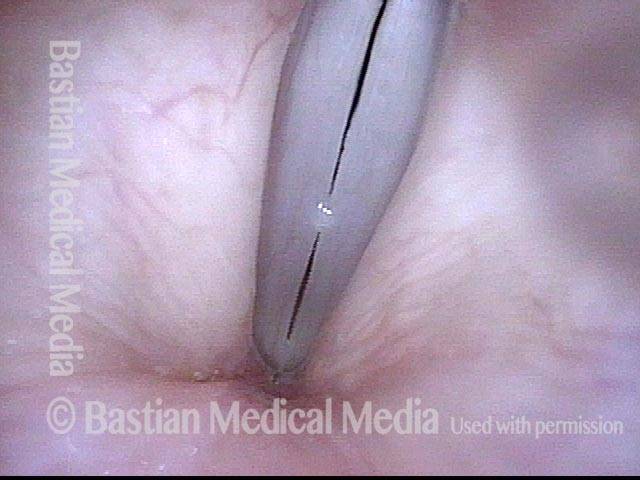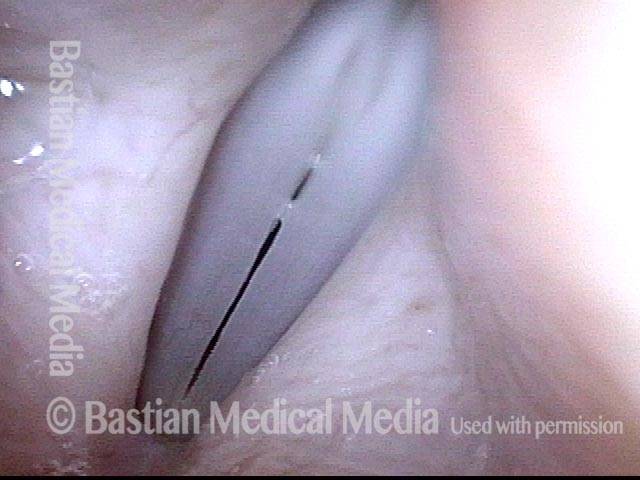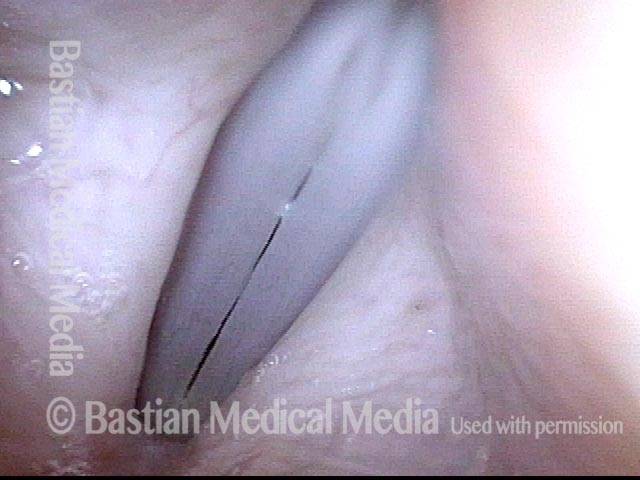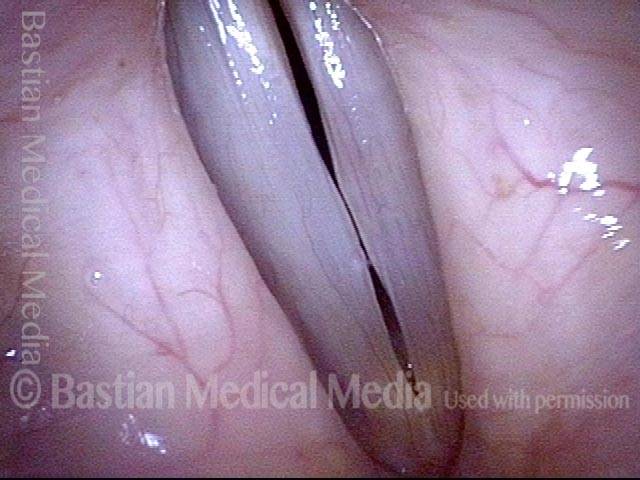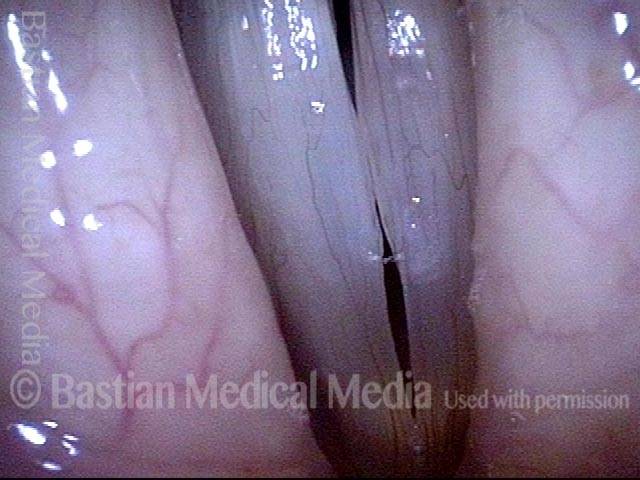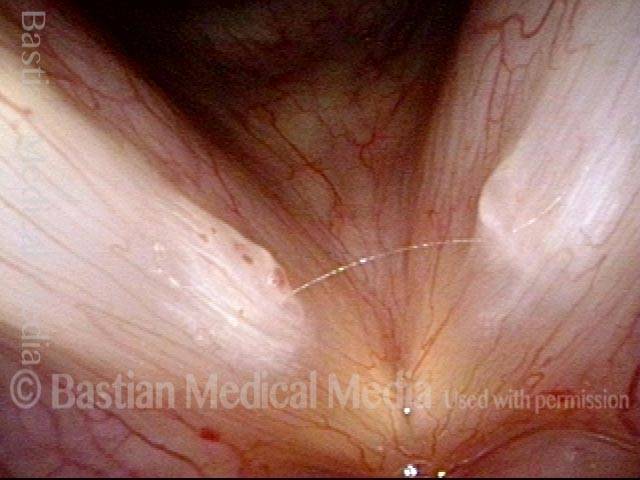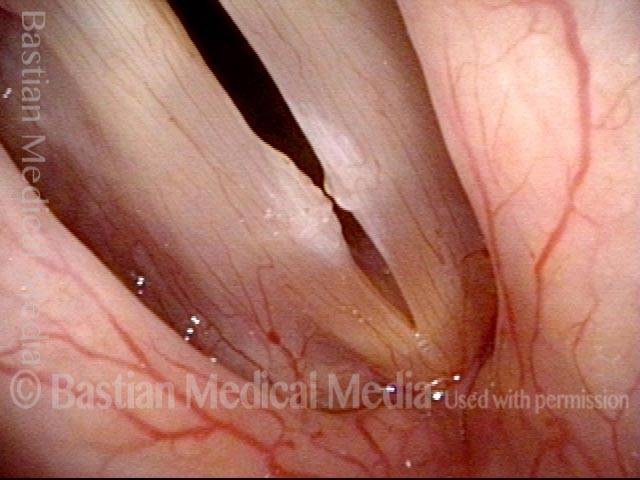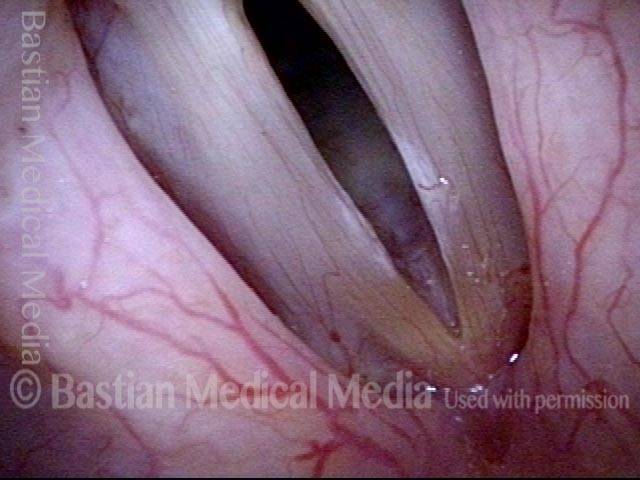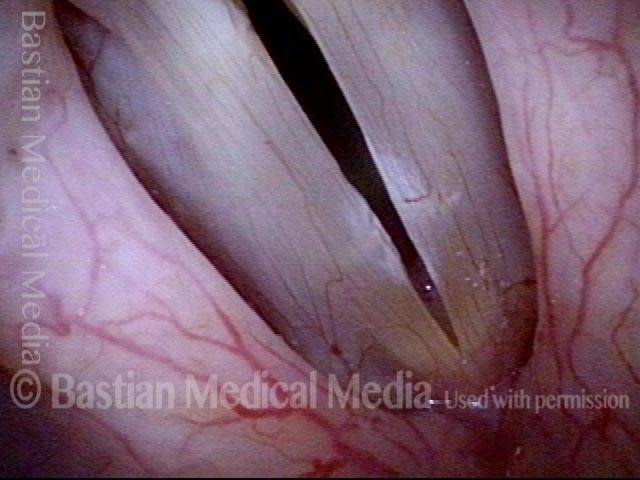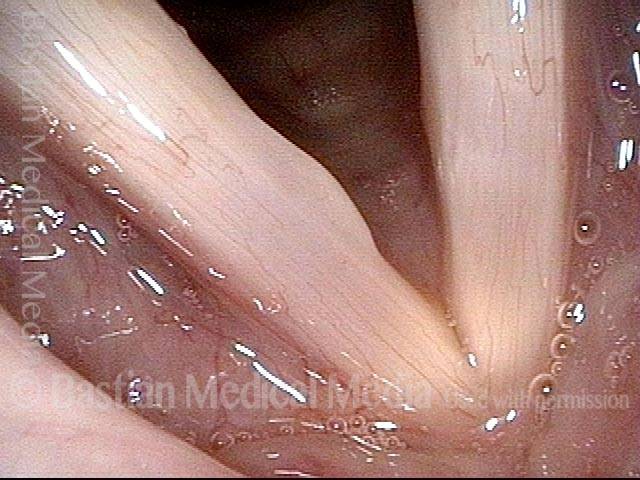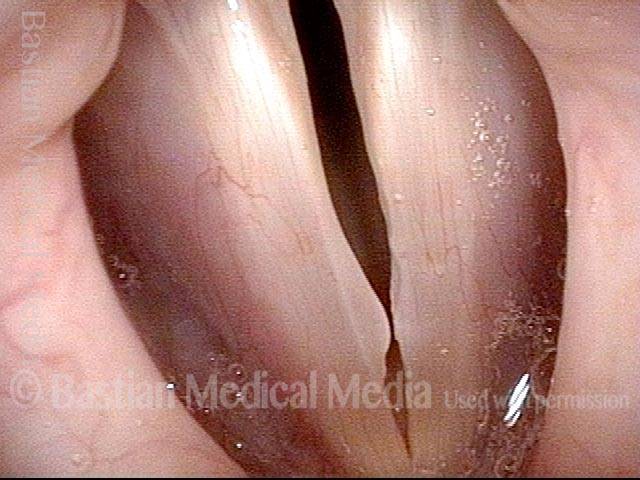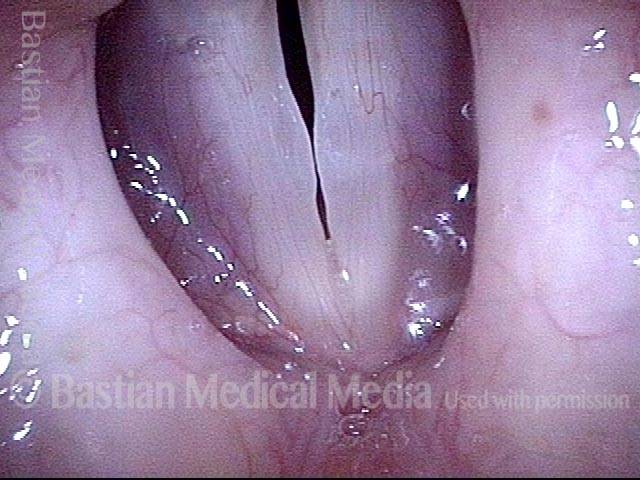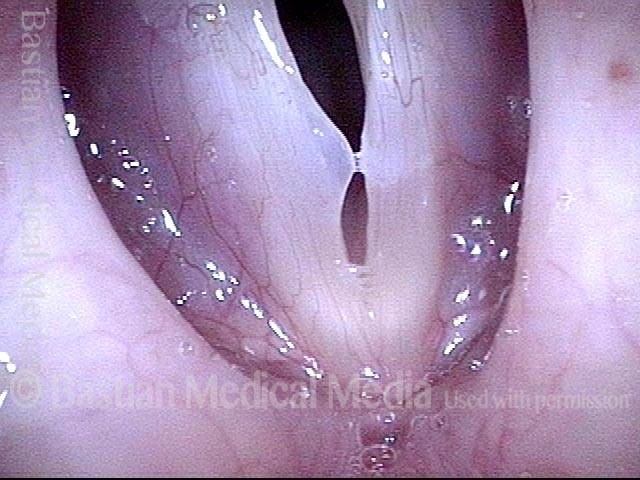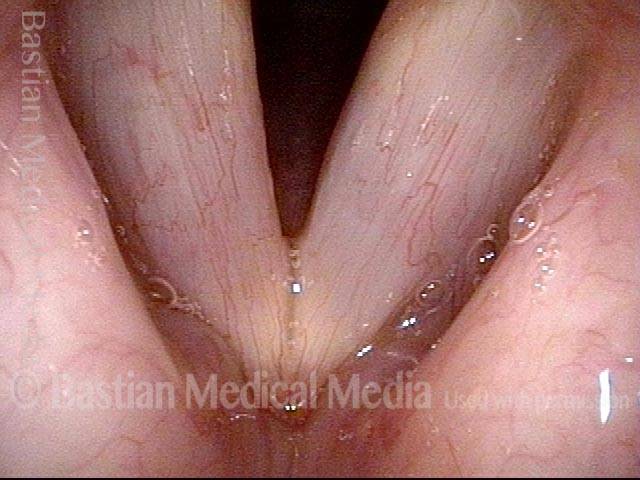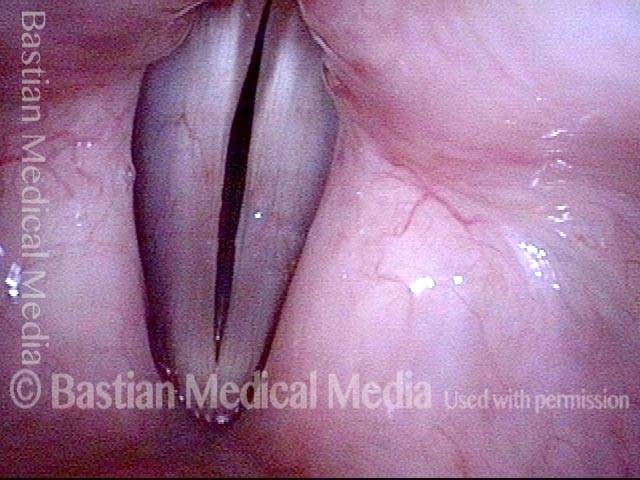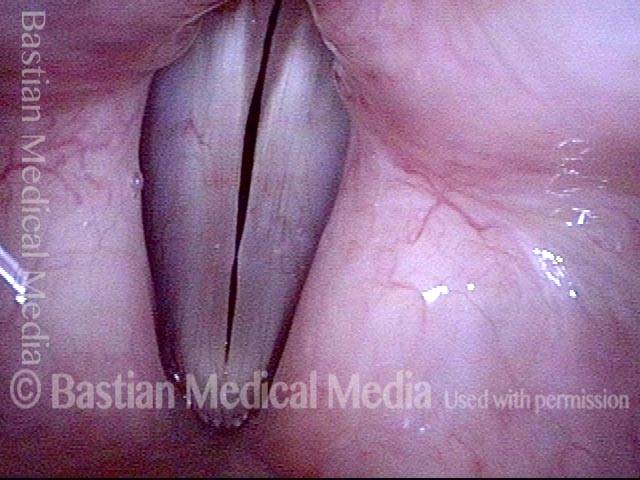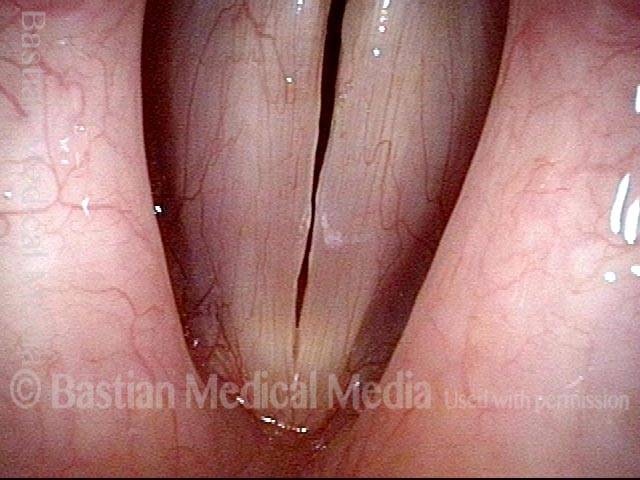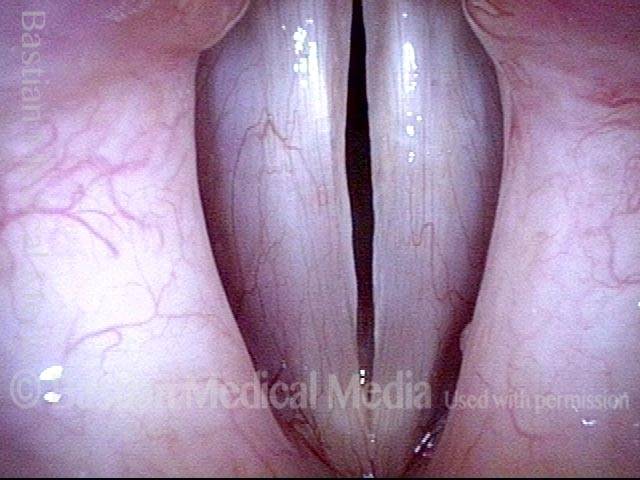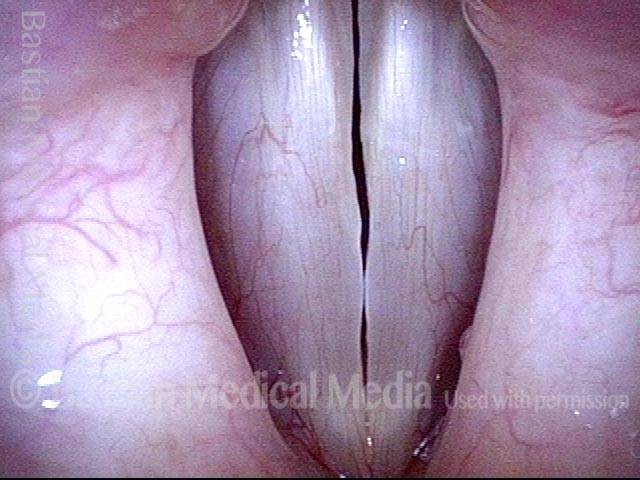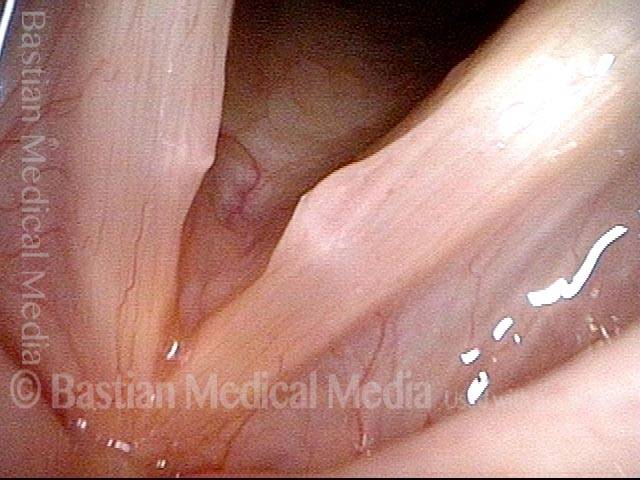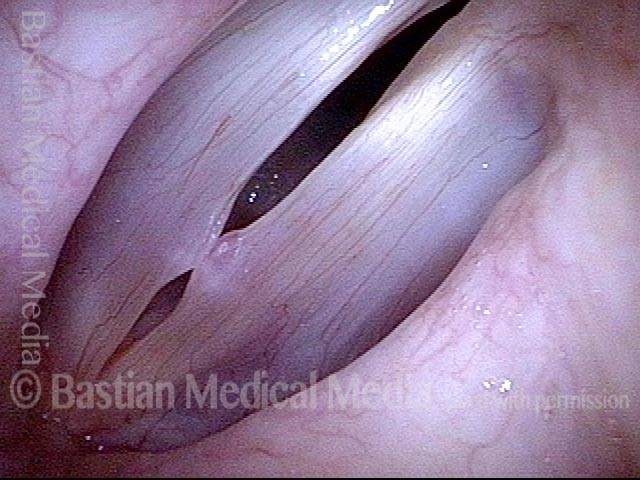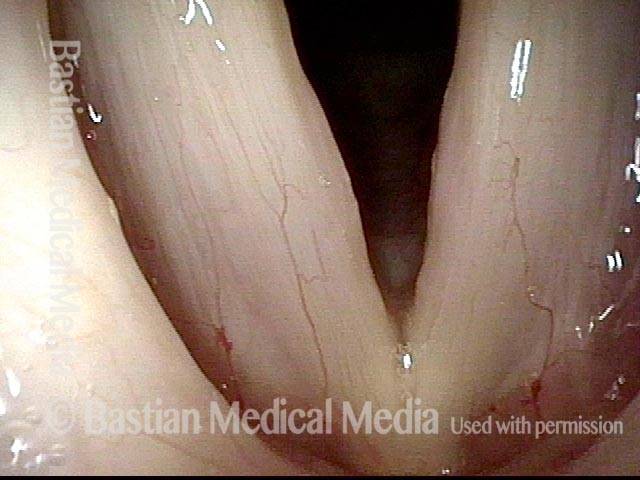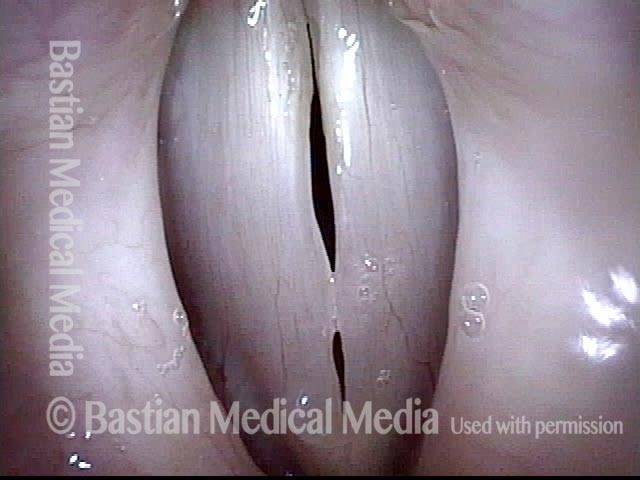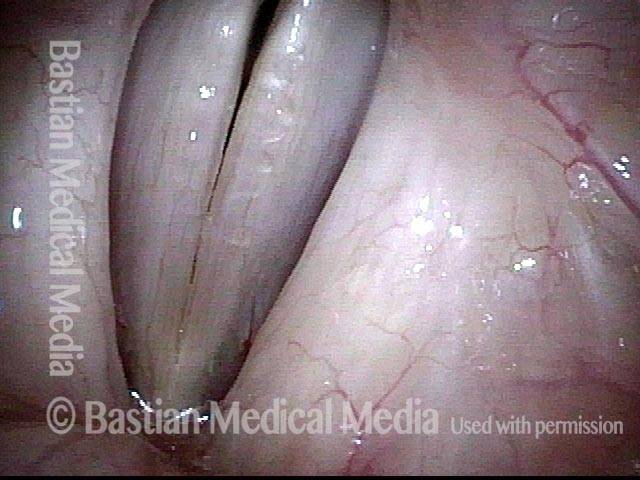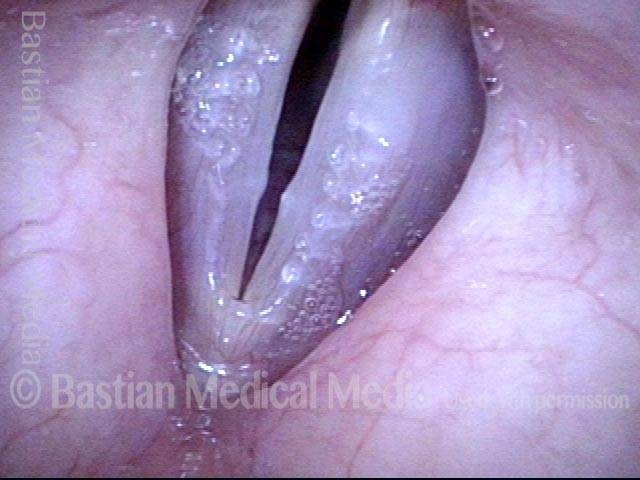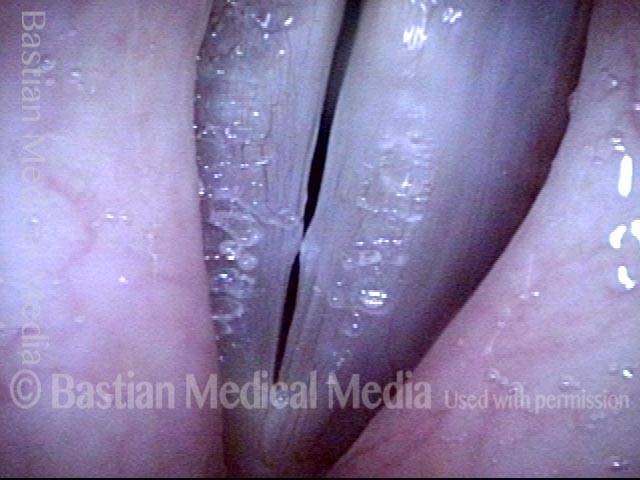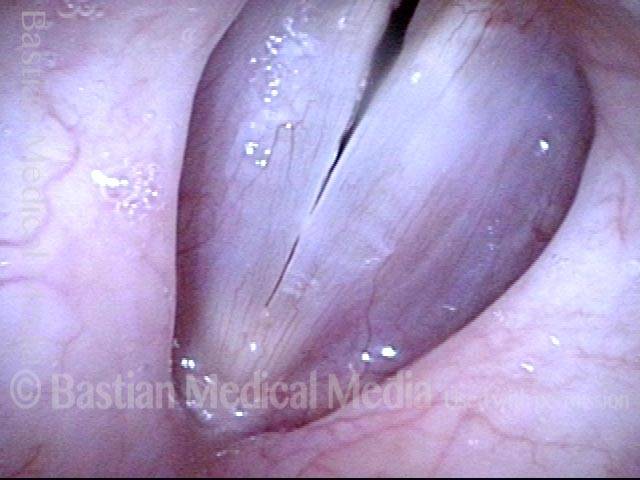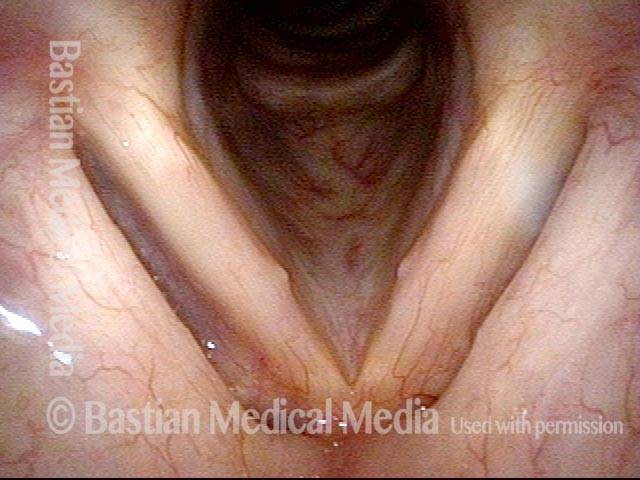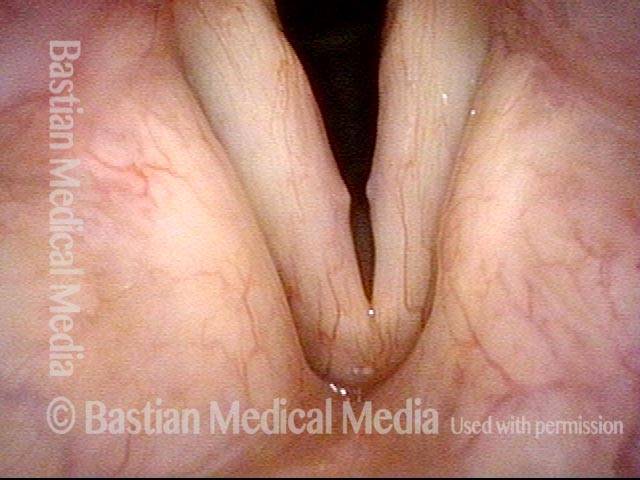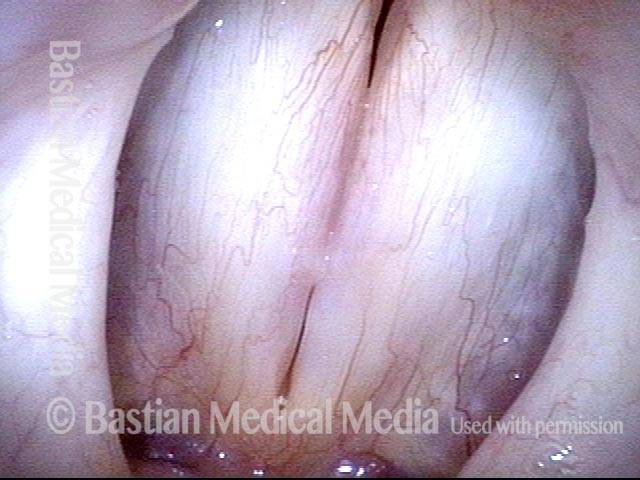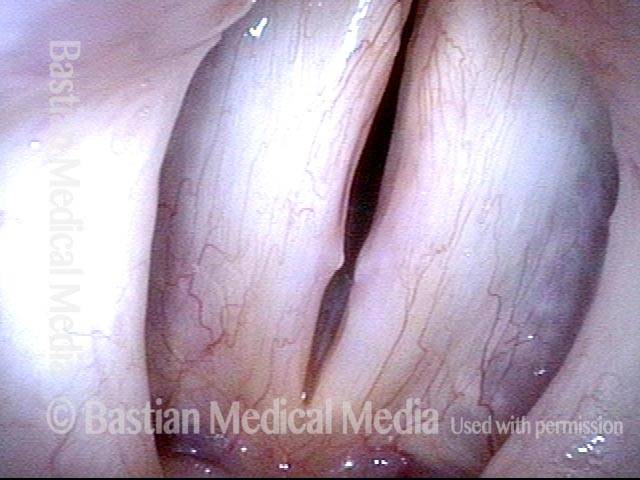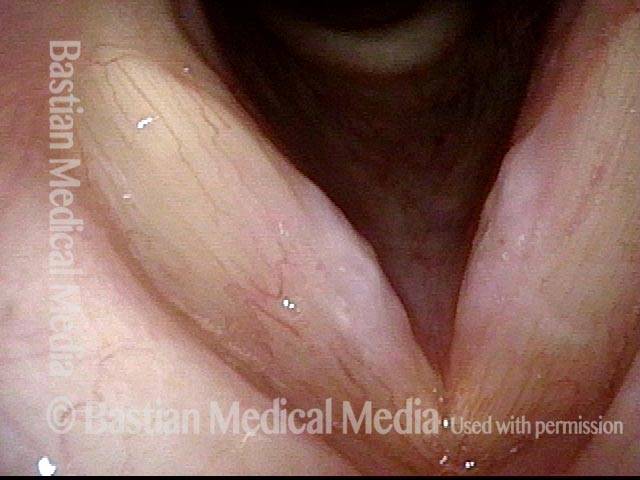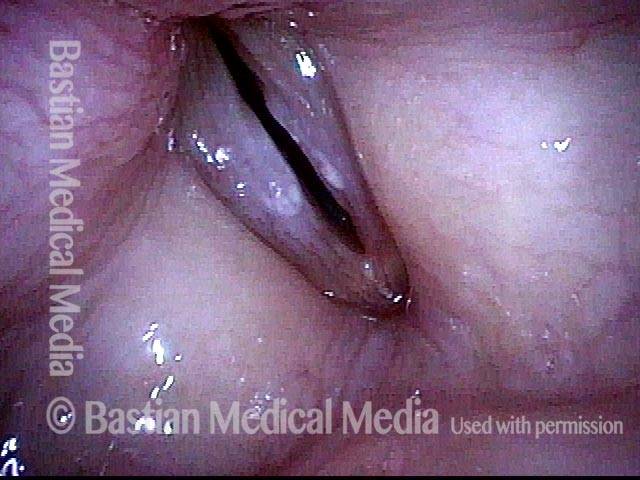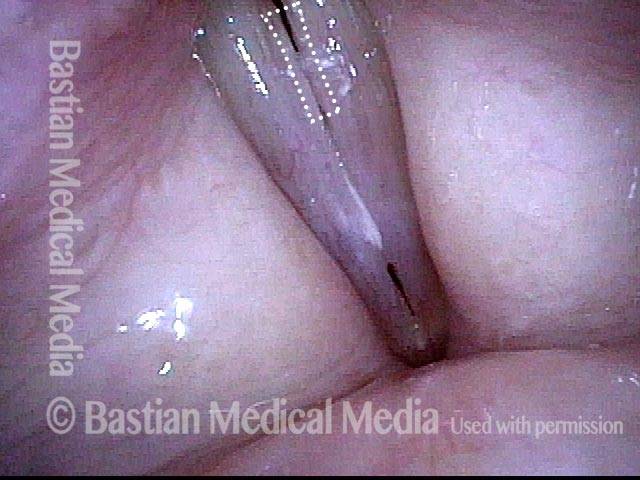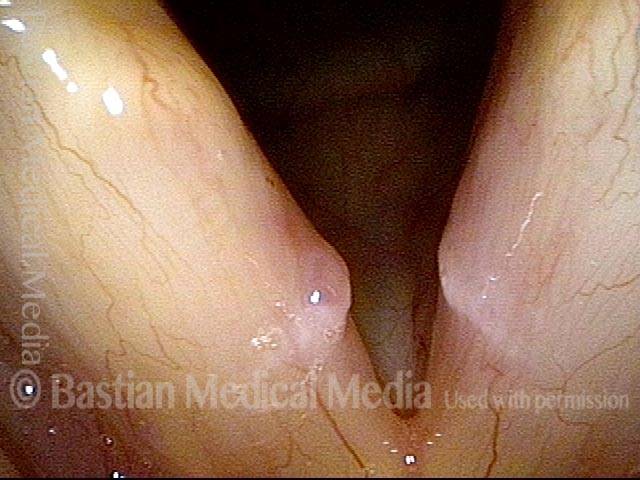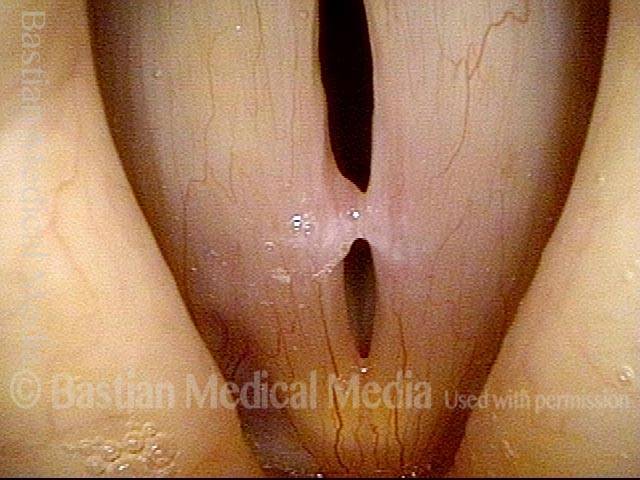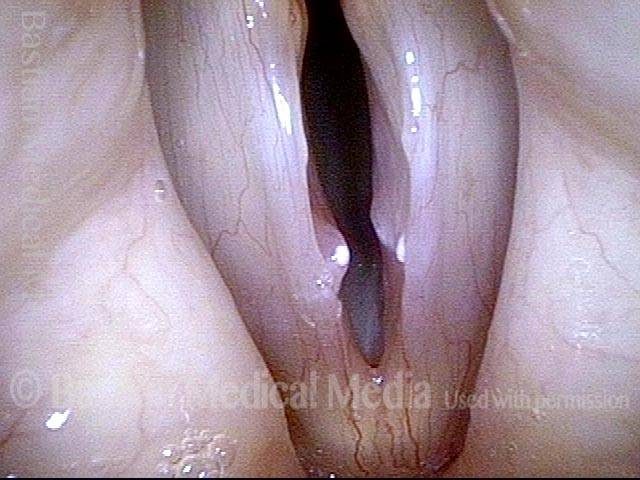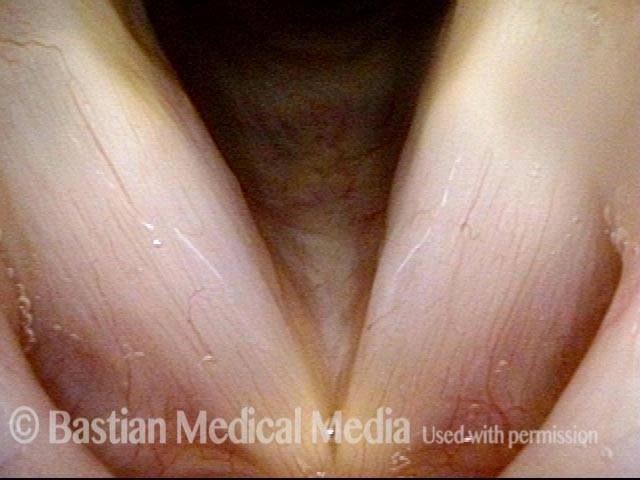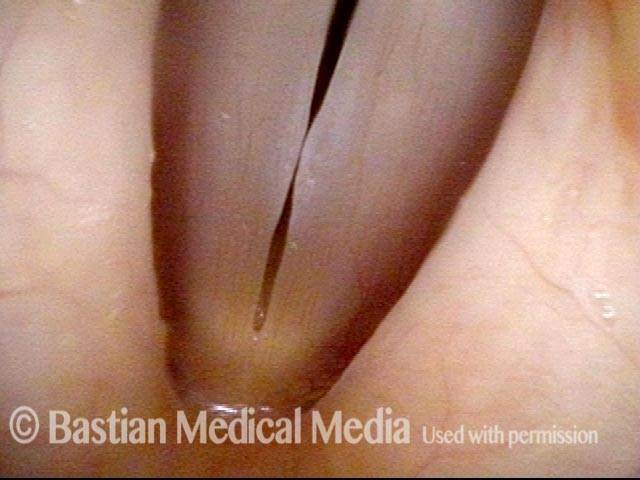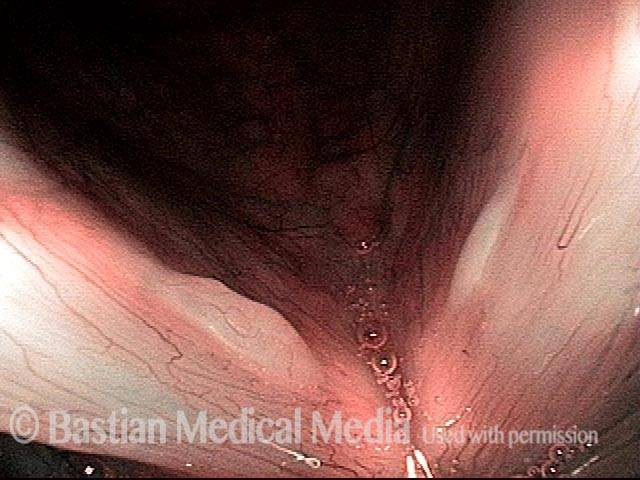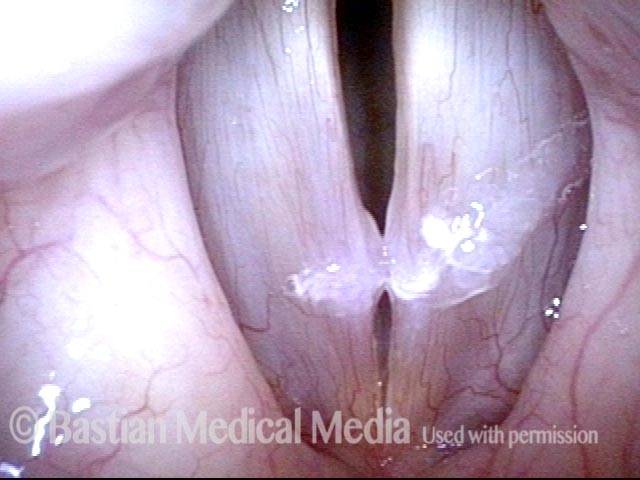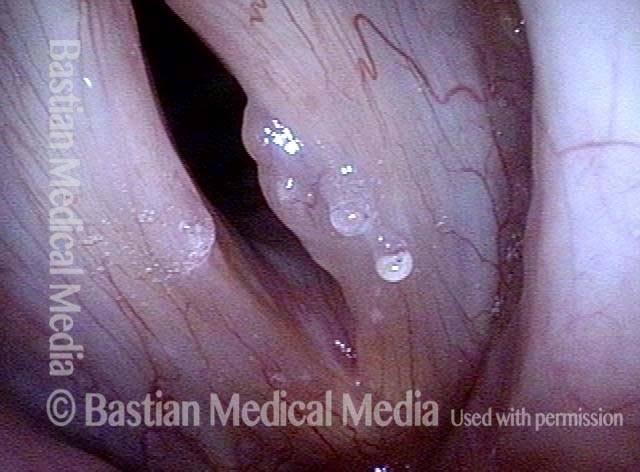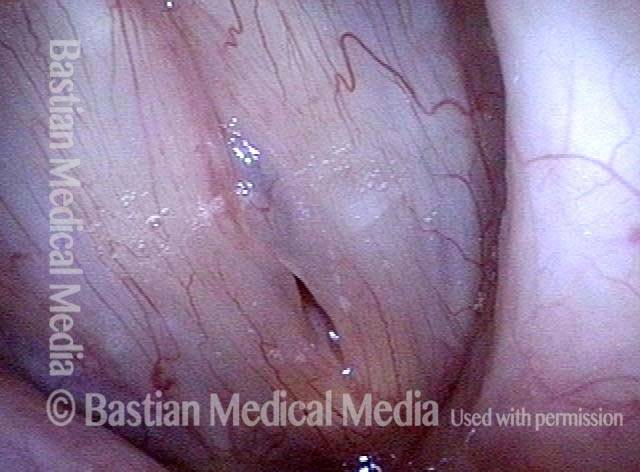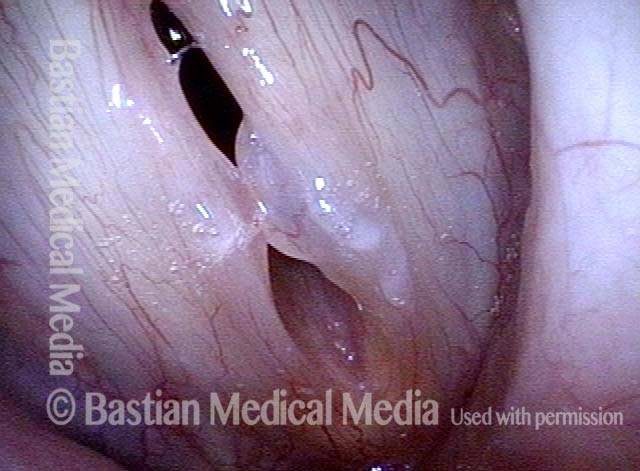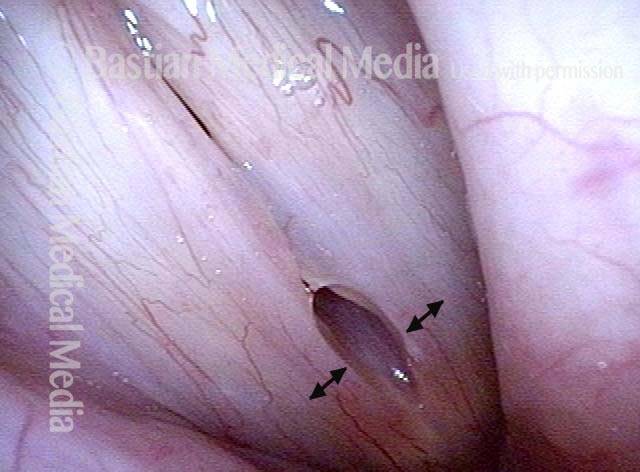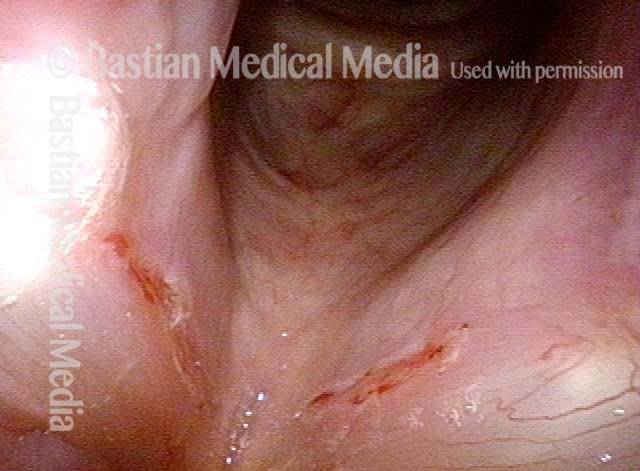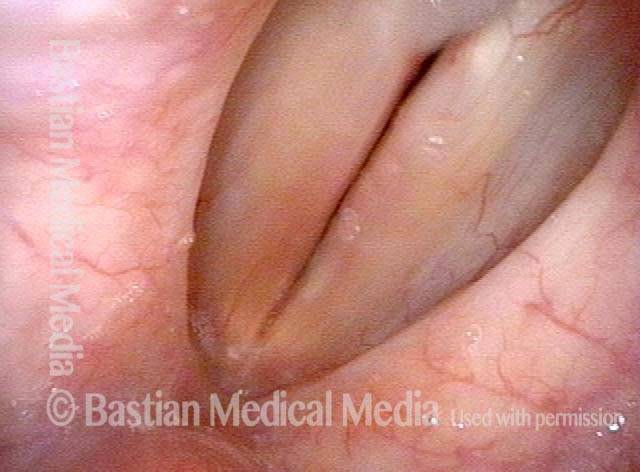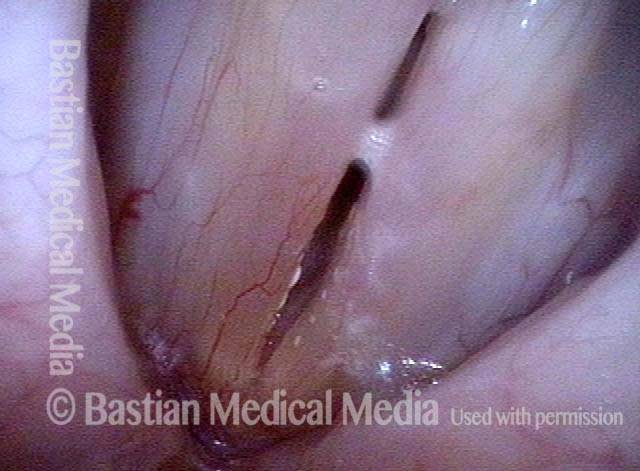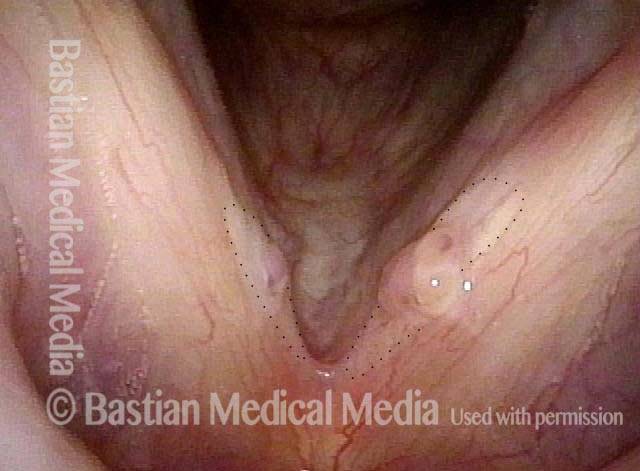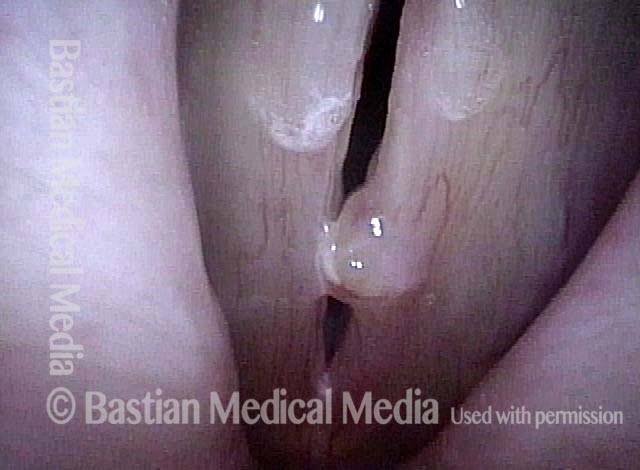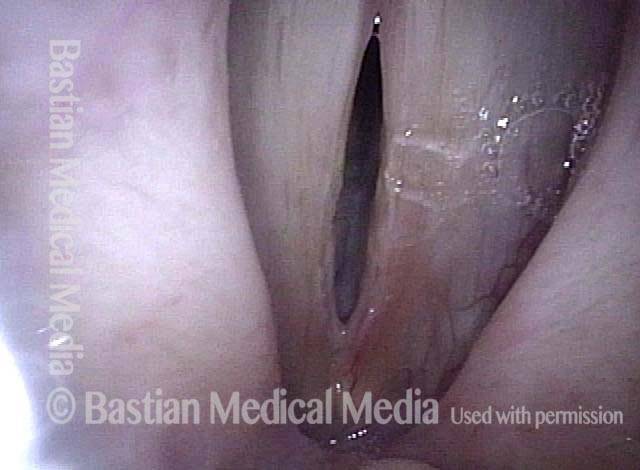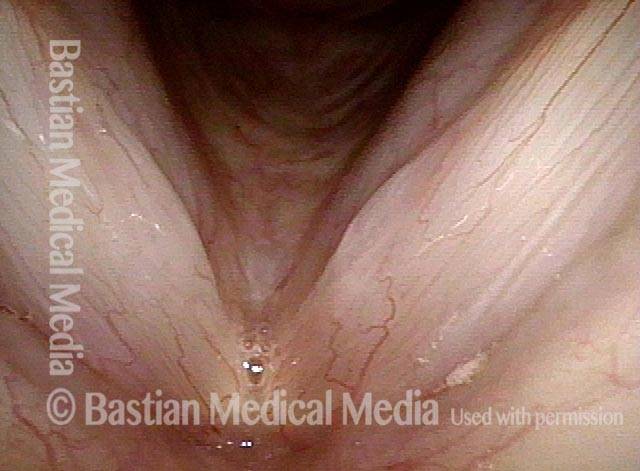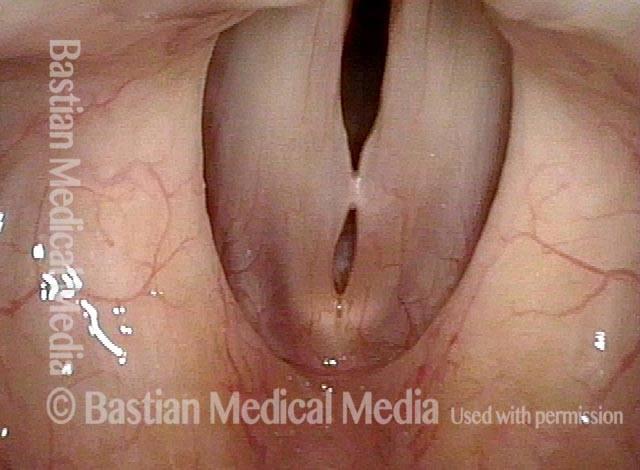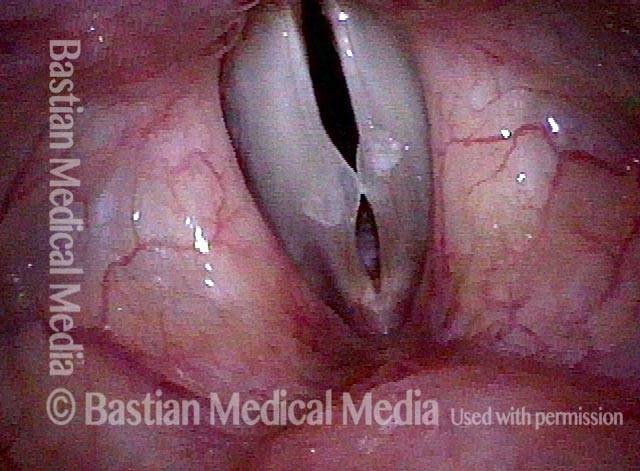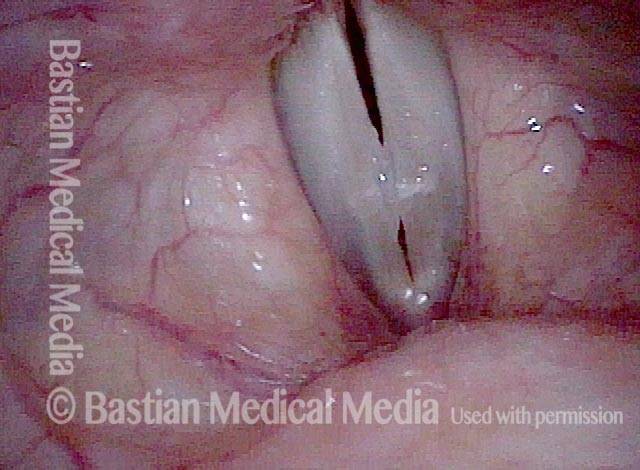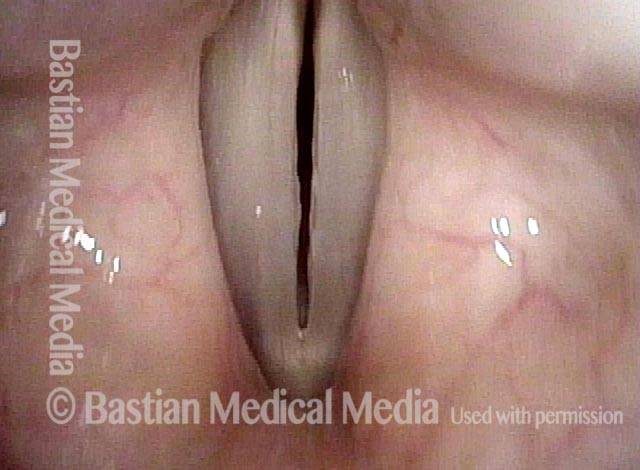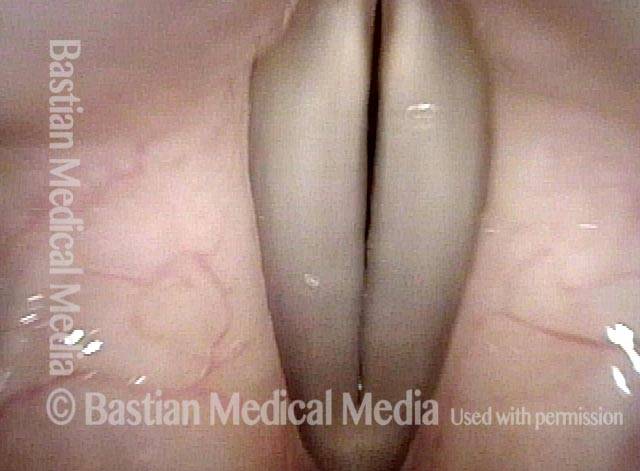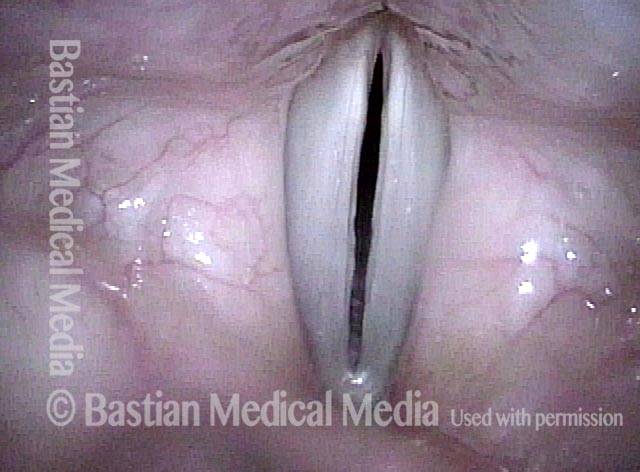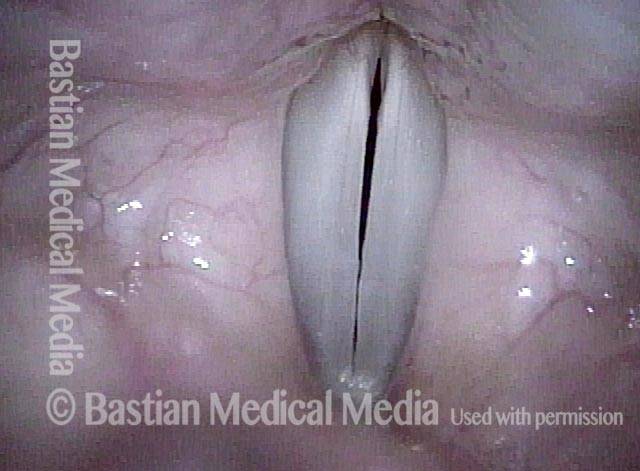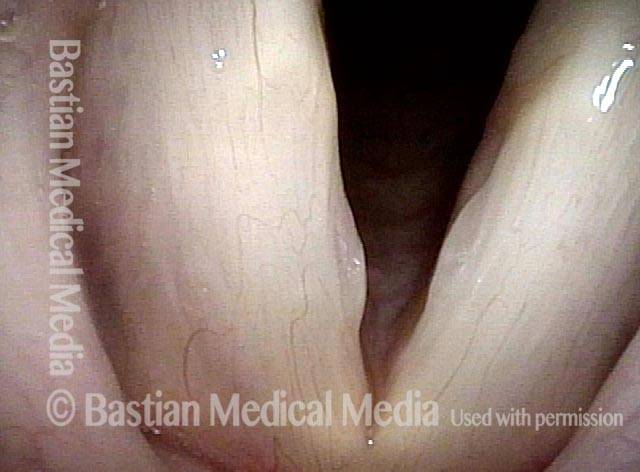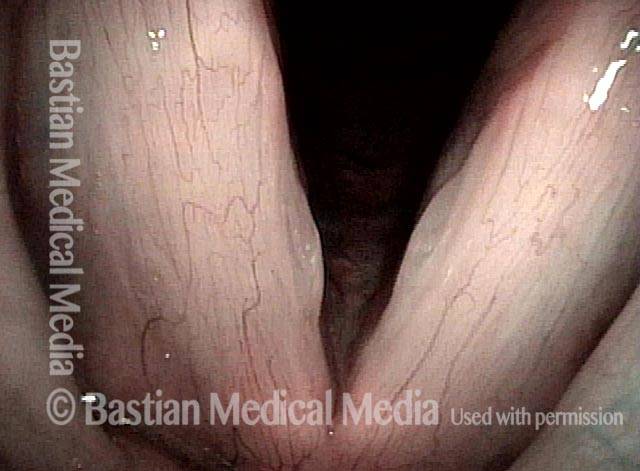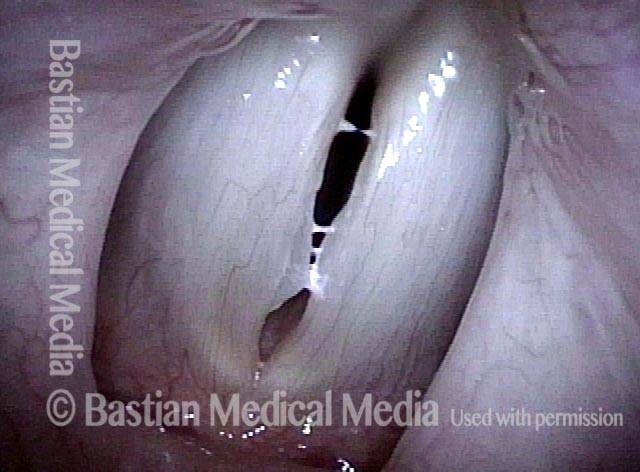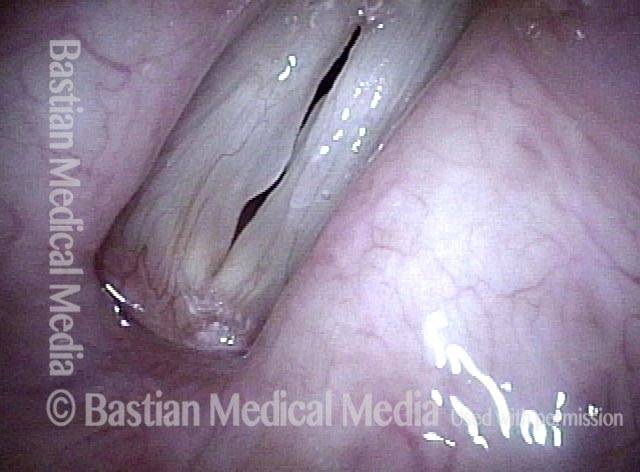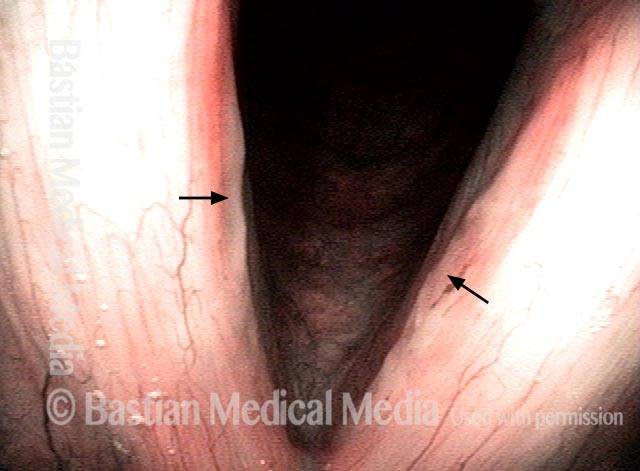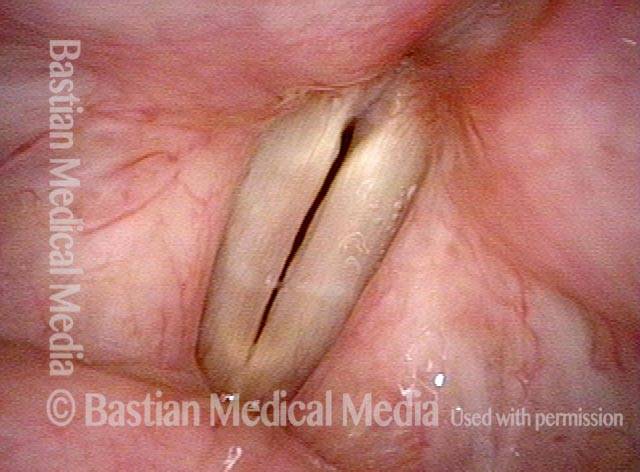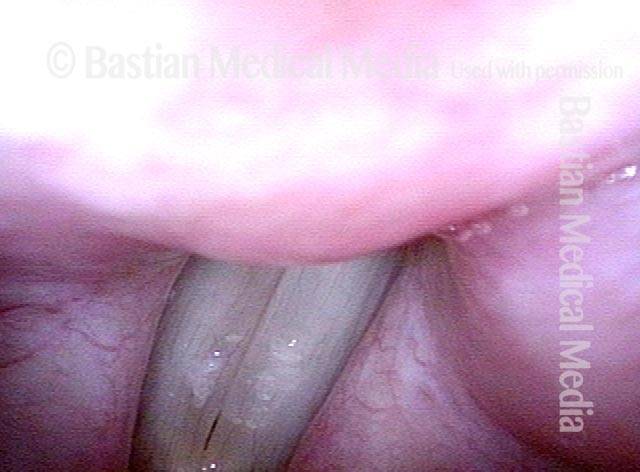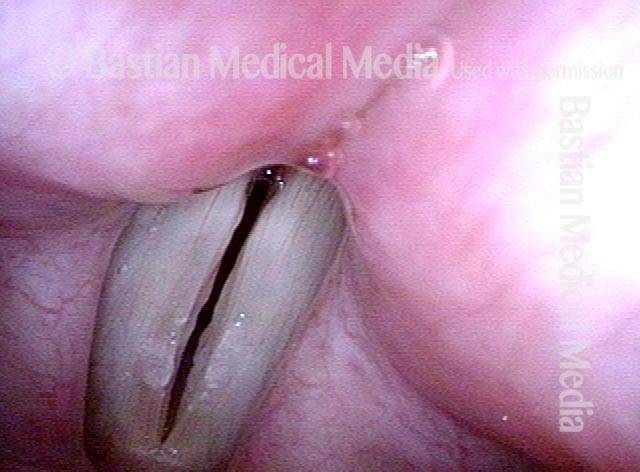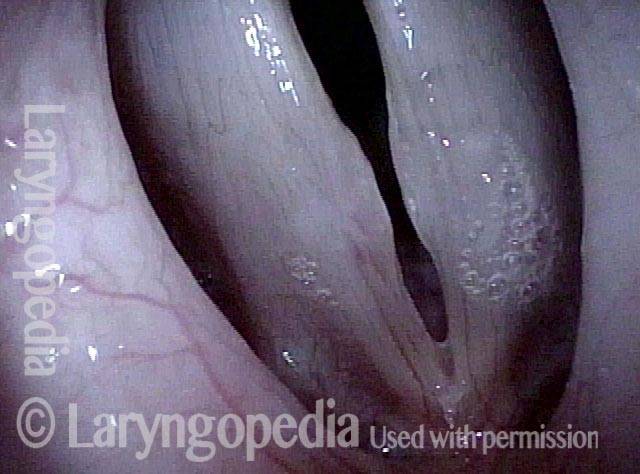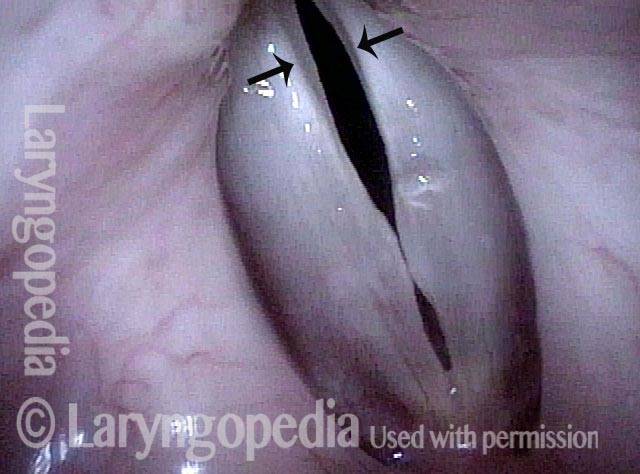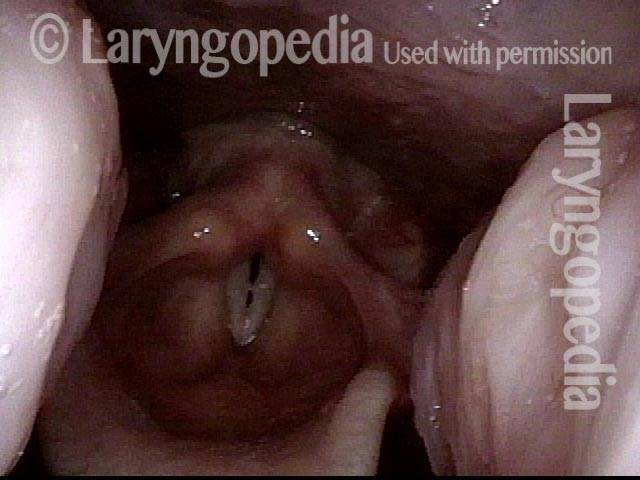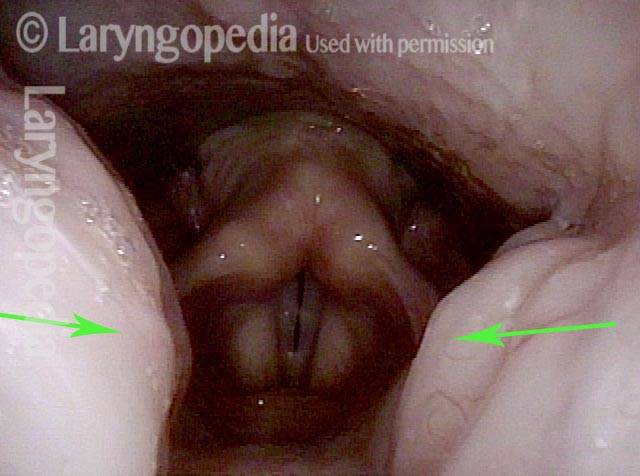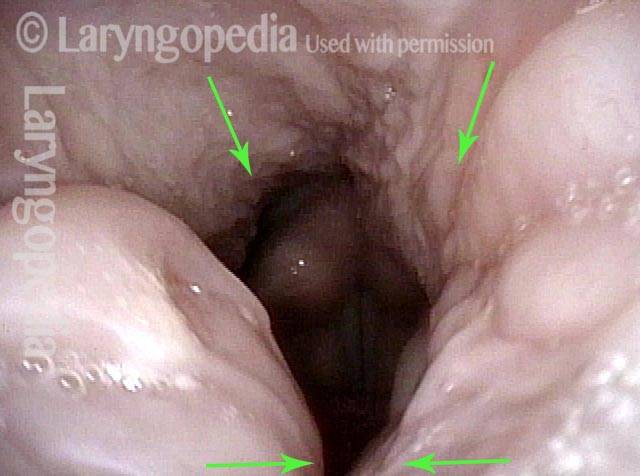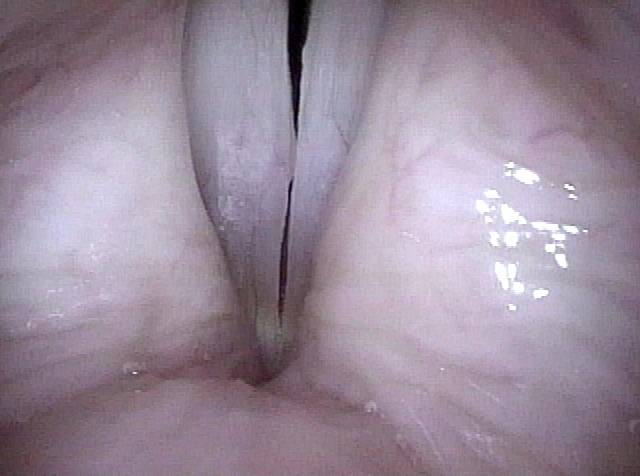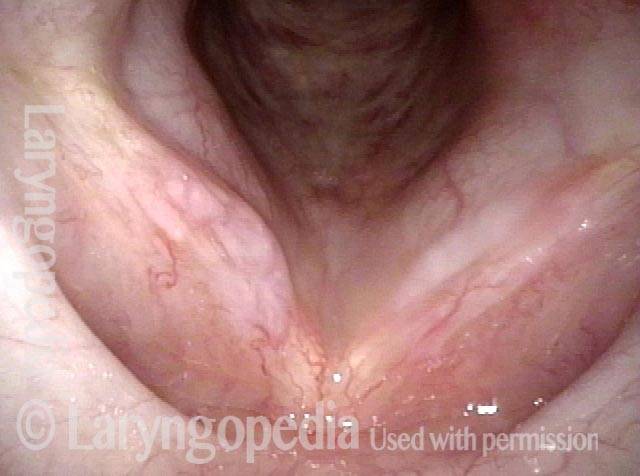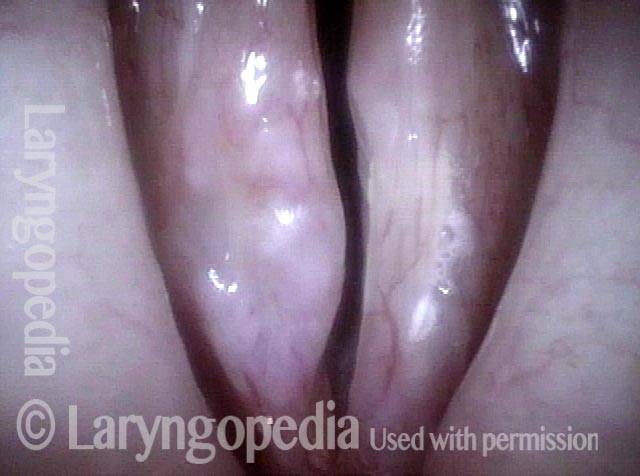Noduli Corde Vocale
Noduli corde vocale sono piccoli gonfiori cronici che compaiono nella giunzione del terzo medio e anteriore delle corde vocali. Questi gonfiori, o noduli (nodi), sono lesioni vibratorie causate da un uso eccessivo della voce. Il sintomo più evidente dei noduli medio-grandi tende ad essere la raucedine. I sintomi principali dei noduli di qualsiasi dimensione possono includere:
- Difficoltà con il canto acuto e sommesso
- Variabilità quotidiana della capacità vocale e della chiarezza
- Un senso di maggiore sforzo nel produrre la voce, soprattutto per cantare
- Resistenza ridotta, tanto che la voce diventa roca o “stanca” dopo un uso minore della voce rispetto a prima
- Ritardi nell’esordio fonatorio, quando si sente un leggero sibilo d’aria prima che la voce “esploda”.
Come si formano i noduli
Quando usi eccessivamente la tua voce, il tuo corpo cerca di ammortizzare le corde vocali accumulando edema (liquido) sotto la mucosa delle corde vocali (lo strato superficiale delle corde); questo edema accumulato è come una piccola vescica a basso profilo sul dito. Se dopo qualche giorno si smette di abusare della voce, l’edema si dissolve facilmente, nel giro di pochi giorni, e questa “vescica” sulle corde vocali svanisce.
Se, tuttavia, la quantità o il modo di uso della voce rimane eccessivo per molte settimane o mesi, il corpo deposita più materiali di gonfiore cronico (non più solo fluido edema) e le corde vocali sviluppano veri noduli.
Perché i noduli corde vocale influenzano la voce
In entrambi i casi (gonfiore acuto o nodulo cronico), questa lesione alla mucosa può compromettere la voce in due modi: riduce la flessibilità vibratoria della mucosa e interferisce con la corretta corrispondenza delle corde quando si uniscono per produrre la voce. Questa menomazione fa sì che la voce diventi rauca o, più sottilmente, soffra di ritardi nell’esordio, difficoltà con le note alte e altri problemi simili.
Trattamento
Nodules will often dissipate, with the help of rest and perhaps speech/voice therapy, over a period of weeks or months. Sometimes, the swellings are so stubborn that surgery is required.
I noduli spesso si dissipano, con l’aiuto del riposo e forse della logopedia/voce, nell’arco di settimane o mesi. A volte, i gonfiori sono così ostinati che è necessario un intervento chirurgico.
Come è la voce dopo il trattamento?
Effetto dei noduli corde vocali sulla voce, PRIMA della rimozione chirurgica (vedere le foto di questo paziente appena sotto):
Stesso paziente, sette settimane DOPO la rimozione chirurgica dei noduli corde vocali:
Noduli corde vocali, prima e dopo l’intervento chirurgico
Vocal nodules (1 of 6)
Vocal nodules (1 of 6)
Breathy voice (2 of 6)
Breathy voice (2 of 6)
1 week after surgery (3 of 6)
1 week after surgery (3 of 6)
Closed phase (4 of 6)
Closed phase (4 of 6)
7 weeks after surgery (5 of 6)
7 weeks after surgery (5 of 6)
7 weeks after surgery (6 of 6)
7 weeks after surgery (6 of 6)
Noduli corde vocali polipoidi
Polypoid vocal nodules (1 of 4)
Polypoid vocal nodules (1 of 4)
Incomplete closure (2 of 4)
Incomplete closure (2 of 4)
Polypoid vocal nodules (3 of 4)
Polypoid vocal nodules (3 of 4)
Polypoid vocal nodules (4 of 4)
Polypoid vocal nodules (4 of 4)
Noduli corde vocali, leucoplachia ed ectasia capillare
Vocal nodules, leukoplakia, and capillary ectasia (1 of 4)
Vocal nodules, leukoplakia, and capillary ectasia (1 of 4)
Vocal nodules, leukoplakia, and capillary ectasia (2 of 4)
Vocal nodules, leukoplakia, and capillary ectasia (2 of 4)
Vocal nodules, leukoplakia, and capillary ectasia: 6 months later (3 of 4)
Vocal nodules, leukoplakia, and capillary ectasia: 6 months later (3 of 4)
Vocal nodules, leukoplakia, and capillary ectasia: 6 months later (4 of 4)
Vocal nodules, leukoplakia, and capillary ectasia: 6 months later (4 of 4)
Noduli corde vocali, prima e dopo l’intervento chirurgico
Vocal nodules (1 of 10)
Vocal nodules (1 of 10)
Prephonatory instant (2 of 10)
Prephonatory instant (2 of 10)
Translucency (3 of 10)
Translucency (3 of 10)
Open phase (4 of 10)
Open phase (4 of 10)
1 week after surgery (5 of 10)
1 week after surgery (5 of 10)
1 week after surgery (6 of 10)
1 week after surgery (6 of 10)
1 week after surgery (7 of 10)
1 week after surgery (7 of 10)
Vocal nodules: 10 weeks after surgery (8 of 10)
Vocal nodules: 10 weeks after surgery (8 of 10)
10 weeks after surgery (9 of 10)
10 weeks after surgery (9 of 10)
10 weeks after surgery (10 of 10)
10 weeks after surgery (10 of 10)
Esempio 2
Vocal nodules (1 of 4)
Vocal nodules (1 of 4)
Phonation (2 of 4)
Phonation (2 of 4)
After surgery (3 of 4)
After surgery (3 of 4)
After surgery (4 of 4)
After surgery (4 of 4)
Esempio 3
Vocal nodules, before surgery (1 of 4)
Vocal nodules, before surgery (1 of 4)
Before surgery (2 of 4)
Before surgery (2 of 4)
After surgery (3 of 4)
After surgery (3 of 4)
Vocal nodules, after surgery (4 of 4)
Vocal nodules, after surgery (4 of 4)
Noduli corde vocali, a forma di spicola
Vocal nodules (1 of 3)
Vocal nodules (1 of 3)
During phonation (2 of 3)
During phonation (2 of 3)
Closed phase (3 of 3)
Closed phase (3 of 3)
Esempio 2
Vocal nodules (1 of 4)
Vocal nodules (1 of 4)
Small nodules (2 of 4)
Small nodules (2 of 4)
Phonation (3 of 4)
Phonation (3 of 4)
Open phase (4 of 4)
Open phase (4 of 4)
Noduli fibrotici
Fibrotic nodules (1 of 5)
Fibrotic nodules (1 of 5)
Fibrotic nodules: full-length vibration at low pitch (2 of 5)
Fibrotic nodules: full-length vibration at low pitch (2 of 5)
Fibrotic nodules: full-length vibration at low pitch (3 of 5)
Fibrotic nodules: full-length vibration at low pitch (3 of 5)
Fibrotic nodules: segmental vibration at high pitch (4 of 5)
Fibrotic nodules: segmental vibration at high pitch (4 of 5)
Fibrotic nodules: segmental vibration at high pitch (5 of 5)
Fibrotic nodules: segmental vibration at high pitch (5 of 5)
Noduli corde vocali
Vocal nodules (1 of 4)
Vocal nodules (1 of 4)
Prephonatory instant (2 of 4)
Prephonatory instant (2 of 4)
Open phase of vibration (3 of 4)
Open phase of vibration (3 of 4)
Closed phase of vibration (4 of 4)
Closed phase of vibration (4 of 4)
Esempio 2
Vocal nodules (1 of 2)
Vocal nodules (1 of 2)
Vocal nodules (2 of 2)
Vocal nodules (2 of 2)
Esempio 3
Vocal nodules (1 of 1)
Vocal nodules (1 of 1)
Example 4
Vocal nodules (1 of 1)
Vocal nodules (1 of 1)
Ferite delle corde vocali, 2 ore dopo l’intervento chirurgico
Polypoid nodule, open phase (1 of 8)
Polypoid nodule, open phase (1 of 8)
Polypoid nodule, closed phase (2 of 8)
Polypoid nodule, closed phase (2 of 8)
Polypoid nodule, right and left cords (3 of 8)
Polypoid nodule, right and left cords (3 of 8)
Segmental vibration (4 of 8)
Segmental vibration (4 of 8)
Post-surgery wounds (5 of 8)
Post-surgery wounds (5 of 8)
Post-surgery, closed phase (6 of 8)
Post-surgery, closed phase (6 of 8)
Post-surgery, open phase (7 of 8)
Post-surgery, open phase (7 of 8)
Post-surgery, precise match (8 of 8)
Post-surgery, precise match (8 of 8)
Fibrosi come base per i noduli, prima e dopo l’intervento chirurgico
Bilateral polypoid nodules (1 of 8)
Bilateral polypoid nodules (1 of 8)
Narrow-band lighting (2 of 8)
Narrow-band lighting (2 of 8)
Closed phase (3 of 8)
Closed phase (3 of 8)
Open phase (4 of 8)
Open phase (4 of 8)
Two weeks after surgery (5 of 8)
Two weeks after surgery (5 of 8)
Phonation (6 of 8)
Phonation (6 of 8)
Margin fibrosis (7 of 8)
Margin fibrosis (7 of 8)
Open phase (8 of 8)
Open phase (8 of 8)
Noduli vocali prima e 1 settimana dopo la rimozione
Vocal nodules (1 of 8)
Vocal nodules (1 of 8)
Muscular tension dysphonia (2 of 8)
Muscular tension dysphonia (2 of 8)
Open phase (3 of 8)
Open phase (3 of 8)
Closed phase (4 of 8)
Closed phase (4 of 8)
Post-op, one week (5 of 8)
Post-op, one week (5 of 8)
Phonation (6 of 8)
Phonation (6 of 8)
Open phase (7 of 8)
Open phase (7 of 8)
Closed phase (8 of 8)
Closed phase (8 of 8)
Nodulo vocale Irregolarità postoperatoria ma corrispondenza e flessibilità
Large vocal nodules (1 of 8)
Large vocal nodules (1 of 8)
Narrow band light (2 of 8)
Narrow band light (2 of 8)
One week after surgery (5 of 8)
One week after surgery (5 of 8)
Prephonatory instant (6 of 8)
Prephonatory instant (6 of 8)
Open phase (7 of 8)
Open phase (7 of 8)
Cerca non solo noduli, ma anche vibrazioni segmentali e osserva la commissura posteriore per MTD
Open phase (1 of 4)
Open phase (1 of 4)
Closed phase (2 of 4)
Closed phase (2 of 4)
Segmental vibration (3 of 4)
Segmental vibration (3 of 4)
Posterior commissure (4 of 4)
Posterior commissure (4 of 4)
Tonsille “da bacio”.
Tonsils enlarged (1 of 3)
Tonsils enlarged (1 of 3)
Higher pitch (2 of 3)
Higher pitch (2 of 3)
Tonsils in contact (3 of 3)
Tonsils in contact (3 of 3)
Chiedere sia alla Voce (attraverso la fenomenologia vocale) che alla Laringe (attraverso un esame motivato) di rivelare i propri segreti
Obvious mucosal injury (1 of 3)
Obvious mucosal injury (1 of 3)
Vocal nodules (2 of 3)
Vocal nodules (2 of 3)
Capillary ectasia (3 of 3)
Capillary ectasia (3 of 3)
La mucosa chiazzata delle corde vocali può nascondere i solchi glottici
Vocal cord swelling and mucosa (1 of 4)
Vocal cord swelling and mucosa (1 of 4)
Same view under strobe light (2 of 4)
Same view under strobe light (2 of 4)
Closed phase (3 of 4)
Closed phase (3 of 4)
Glottic sulcus is visible (4 of 4)
Glottic sulcus is visible (4 of 4)
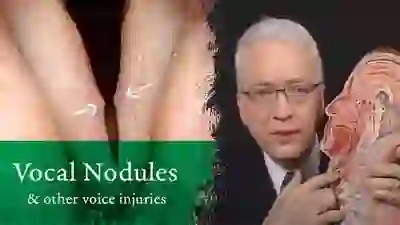
Noduli e altre lesioni delle corde vocali: come si verificano e come possono essere trattati
Questo video spiega come si verificano i noduli e altre lesioni delle corde vocali: attraverso l’eccessiva vibrazione delle corde vocali, che si verifica con un uso eccessivo della voce.
Dopo aver posto queste basi, il video prosegue esplorando il ruolo delle opzioni terapeutiche come la terapia vocale e la microchirurgia delle corde vocali.

Controlli del gonfiore delle corde vocali
In questo video, il dottor Bastian introduce e dimostra due controlli del gonfiore: due semplici esercizi vocali che possono essere utilizzati per aiutare a rilevare i primi segni di lesione delle corde vocali.
Discute anche della fisiologia della lesione delle corde vocali e spiega come utilizzare al meglio questi controlli del gonfiore nella routine quotidiana.
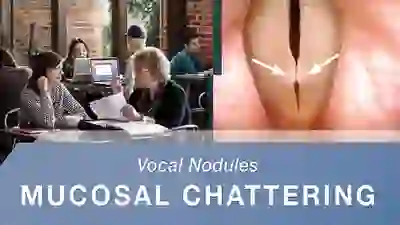
Chiacchieramento delle mucose
In questo video, il dottor Bastian fa ampio uso dell’elicitazione con la propria voce per ascoltare la “fenomenologia vocale” di una voce in fase di valutazione. Ha nominato un fenomeno che non ha mai sentito descrivere altrove come chiacchiere delle mucose.

